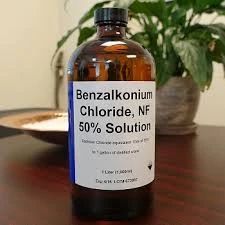A Study on the Properties of Diethylenetriamine Pentamethylene Phosphonic Acid for Industrial Applications
Understanding Diethylenetriamine Penta Methylene Phosphonic Acid Properties and Applications
Diethylenetriamine penta methylene phosphonic acid, commonly referred to as DTPMPA, is a synthetic chemical compound that plays a significant role in various industrial applications due to its unique properties. It is classified as a phosphonic acid and is a derivative of diethylenetriamine, incorporating five methylene phosphonic acid groups. This compound is particularly valued in the fields of water treatment, detergents, and as a chelating agent in several chemical processes.
Chemical Structure and Properties
DTPMPA possesses a complex molecular structure characterized by the presence of amine and phosphonic acid groups. These functional groups contribute to the compound's ability to bind with metal ions, making it an effective chelating agent. The phosphonic acid groups enhance the water solubility of the compound, which is crucial for its function in various formulations. Due to the presence of multiple acid groups, DTPMPA exhibits strong acidity, which helps in sequestering metals and preventing their precipitation in solutions.
One of the notable features of DTPMPA is its high stability under different pH conditions, which allows it to be effective in a wide range of environments. This stability is essential for applications where the chemical may be exposed to varying temperatures and pH levels, such as in industrial water systems.
Applications in Water Treatment
In the water treatment industry, DTPMPA is primarily used as a scale and corrosion inhibitor. Scale formation is a common issue in cooling systems, boilers, and pipelines, resulting in decreased efficiency and potential system failures. DTPMPA effectively prevents the deposition of calcium, magnesium, and other minerals that lead to scale buildup. By forming stable complexes with metal ions, it keeps these ions in solution, thereby minimizing the risk of scale formation.
Moreover, DTPMPA plays a vital role in inhibiting corrosion, particularly in metal surfaces exposed to aggressive water compositions. It does this by forming a protective layer on the metal surface, which reduces the rate of corrosion and extends the lifespan of equipment.
diethylenetriamine penta methylene phosphonic acid

Use in Detergents and Cleaning Agents
DTPMPA is also widely utilized in household and commercial detergents. Its ability to soften water enhances the cleaning efficacy of surfactants present in detergents. By chelating hardness ions, DTPMPA ensures that the surfactants can function more effectively, leading to improved cleaning results. This property is especially important in formulations aimed at removing tough stains and deposits.
Additionally, DTPMPA contributes to the stability of detergent formulations. It helps prevent the precipitation of insoluble materials that can occur in concentrated cleaning products or when mixed with other ingredients. This enhances the overall performance and shelf-life of cleaning products, making them more reliable for end-users.
Agricultural and Industrial Uses
In agriculture, DTPMPA has found its way into fertilizers and pesticide formulations. Its chelating properties assist in the delivery of micronutrients such as iron, copper, and zinc, which are essential for plant health. By ensuring that these nutrients remain soluble and available for uptake by plants, DTPMPA aids in improving crop yields and overall plant vitality.
In industrial settings, DTPMPA is utilized in various chemical processes, including as a stabilizer in chemical reactions where metal ions play a role. Its effectiveness in controlling metal ions can enhance product quality and consistency across numerous applications.
Conclusion
Diethylenetriamine penta methylene phosphonic acid is a versatile and essential chemical in many industrial applications. Its unique properties, particularly its ability to act as a chelating agent, have made it invaluable in water treatment, detergents, and agriculture. As industries continue to seek more efficient and environmentally friendly solutions, the importance of compounds like DTPMPA is likely to grow. Ongoing research and development may further expand its applications, potentially leading to new innovations in water management, cleaning products, and agricultural practices.
-
Premium Isothiazolinones | Broad-Spectrum Biocidal SolutionsNewsAug.28,2025
-
LK-319 Special Scale And Corrosion Inhibitor For Steel Plants: Advanced Solutions for Industrial Water SystemsNewsAug.22,2025
-
Flocculant Water Treatment: Essential Chemical Solutions for Purification ProcessesNewsAug.22,2025
-
Isothiazolinones: Versatile Microbial Control Agents for Industrial and Consumer ApplicationsNewsAug.22,2025
-
Scale Inhibitor: Key Solutions for Water System Scale PreventionNewsAug.22,2025
-
Organophosphonates: Versatile Scale Inhibitors for Industrial Water SystemsNewsAug.22,2025





